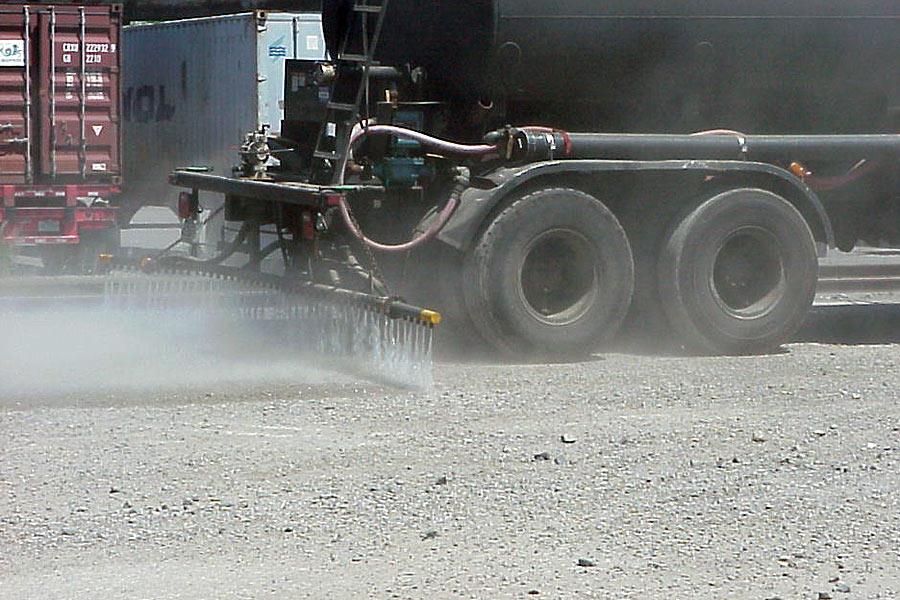Dust abatement is a crucial aspect of various industries, from construction and mining to agriculture and transportation. The proliferation of dust not only impacts air quality but also poses significant challenges to safety, health, and productivity. In the quest for effective dust abatement and dust control, the market offers a plethora of products, each claiming superiority. But which ones truly stand out as the best solutions? Let’s explore some of the top contenders in the realm of dust abatement products.
Calcium Chloride for Dust Abatement
Key Features: Calcium chloride stands out for its unparalleled ability to bind dust particles to surfaces effectively. Upon application, it penetrates the soil and forms strong bonds, creating a durable crust that resists disintegration even under heavy traffic or adverse weather conditions. This robust binding action ensures long-lasting dust suppression, reducing the need for frequent reapplications and minimizing maintenance costs.
One of calcium chloride’s distinctive characteristics is its hygroscopic nature. This means it has the remarkable ability to attract moisture from the surrounding air, even in low humidity environments. By maintaining surface dampness, calcium chloride extends its dust suppression efficacy, ensuring consistent performance regardless of weather conditions. This moisture retention not only enhances dust control but also contributes to improved road stability and reduced erosion.
Calcium chloride offers versatility in application methods, making it suitable for a wide range of environments and industries. Whether applied as a liquid spray or in pre-treated granular form, it can be tailored to meet specific dust control needs and environmental considerations. Liquid applications are ideal for treating large surface areas, while pre-treated granules offer convenience and ease of application, particularly in remote or hard-to-reach locations.
Ideal Applications:
- Unpaved Roads: Calcium chloride is highly effective in stabilizing unpaved roads, reducing dust emissions and improving surface durability. Its binding power enhances road integrity, minimizing rutting and potholes, and providing a smoother driving experience for vehicles.
- Construction Sites: In construction environments where dust can be a significant nuisance and safety hazard, calcium chloride offers reliable dust control solutions. By suppressing airborne particles, it creates a safer and more productive work environment, reducing the risk of respiratory issues and equipment damage.
- Mining Operations: The dusty conditions prevalent in mining operations pose numerous challenges, from worker health and safety concerns to equipment maintenance issues. Calcium chloride helps mitigate these challenges by effectively suppressing dust emissions, improving visibility, and enhancing overall operational efficiency.
- Agricultural Fields: Dust can have detrimental effects on crop health and productivity in agricultural settings. Calcium chloride aids in dust suppression on farm roads and field access routes, minimizing soil erosion and preserving soil moisture for optimal plant growth.
Environmental Considerations:
While calcium chloride offers exceptional dust control benefits, it’s important to consider its environmental impact. While generally regarded as safe for use, proper application practices are essential to minimize any potential risks to surrounding ecosystems. Additionally, choosing calcium chloride products with low environmental impact formulations can further mitigate any adverse effects.
Environmental Impact Assessment:
Before implementing calcium chloride for dust control, conducting a comprehensive environmental impact assessment is imperative. This involves evaluating the potential effects of calcium chloride application on soil, water quality, vegetation, and wildlife habitats in the surrounding area. By understanding the potential risks and benefits, informed decisions can be made to mitigate any adverse environmental impacts.
Minimizing Runoff and Leaching:
One of the primary concerns associated with calcium chloride application is the potential for runoff and leaching into nearby water bodies. To minimize this risk, proper application techniques should be employed, such as using controlled spraying equipment and applying the product during dry weather conditions. Additionally, incorporating erosion control measures, such as vegetative buffers or sedimentation ponds, can help prevent calcium chloride from entering waterways.
Monitoring and Compliance:
Regular monitoring of calcium chloride application sites is essential to ensure compliance with environmental regulations and guidelines. This includes monitoring soil and water quality parameters, as well as assessing any changes in vegetation or wildlife populations. By maintaining diligent oversight, potential environmental impacts can be identified early, allowing for timely remediation measures to be implemented.
Low Environmental Impact Formulations:
Choosing calcium chloride products with low environmental impact formulations is another effective strategy for minimizing adverse effects. Manufacturers may offer products that are specifically formulated to reduce environmental harm, such as those with lower chloride concentrations or enhanced biodegradability. By opting for these eco-friendly alternatives, businesses can minimize their ecological footprint while still achieving effective dust control.
Collaboration and Stakeholder Engagement:
Engaging with stakeholders, including local communities, environmental organizations, and regulatory agencies, is essential for fostering transparency and accountability in calcium chloride usage. Collaborative efforts can lead to the development of best management practices and mitigation strategies tailored to specific environmental concerns. By actively involving stakeholders in decision-making processes, businesses can build trust and demonstrate their commitment to responsible environmental stewardship.
Continuous Improvement:
Environmental considerations should remain a priority throughout the lifecycle of calcium chloride usage. Continuously evaluating and refining dust control practices based on evolving scientific knowledge and technological advancements is essential for minimizing environmental impact. This may involve adopting alternative dust control methods, implementing innovative application techniques, or investing in research and development of greener formulations.
Get Dust Abatement Products Delivered
Looking to order dust abatement products? SISCU can help. We are open in Maryland for pick up 24/7 and also ship anywhere around the country so you can save money and buy in bulk. Just fill out the contact form below for details.

